�
Writing Scientific Research Articles
�
Writing Scientific
Research Articles
Strategy and Steps
Margaret Cargill and Patrick O’Connor
Margaret Cargill BA, DipEd, MEd (TESOL)
Adjunct Senior Lecturer
School of Earth and Environmental Sciences
The University of Adelaide
South Australia 5005
Australia
Patrick O’Connor BSc, PhD
Visiting Research Fellow
School of Earth and Environmental Sciences
The University of Adelaide
South Australia 5005
Australia
A John Wiley & Sons, Ltd., Publication
�
This edition first published 2009, # 2009 by Margaret Cargill and Patrick O’Connor
Blackwell Publishing was acquired by John Wiley & Sons in February 2007. Blackwell’s publishing
program has been merged with Wiley’s global Scientific, Technical and Medical business to form
Wiley-Blackwell.
Registered office
John Wiley & Sons Ltd, The Atrium, Southern Gate, Chichester, West Sussex, PO19 8SQ, UK
Editorial offices
9600 Garsington Road, Oxford, OX4 2DQ, UK
The Atrium, Southern Gate, Chichester, West Sussex, PO19 8SQ, UK
111 River Street, Hoboken, NJ 07030-5774, USA
For details of our global editorial offices, for customer services and for information about how to
apply for permission to reuse the copyright material in this book please see our website at www.wiley.
com/wiley-blackwell
The right of the author to be identified as the author of this work has been asserted in accordance
with the Copyright, Designs and Patents Act 1988.
All rights reserved. No part of this publication may be reproduced, stored in a retrieval system, or
transmitted, in any form or by any means, electronic, mechanical, photocopying, recording or
otherwise, except as permitted by the UK Copyright, Designs and Patents Act 1988, without the
prior permission of the publisher.
Wiley also publishes its books in a variety of electronic formats. Some content that appears in print
may not be available in electronic books.
Designations used by companies to distinguish their products are often claimed as trademarks. All
brand names and product names used in this book are trade names, service marks, trademarks or
registered trademarks of their respective owners. The publisher is not associated with any product or
vendor mentioned in this book. This publication is designed to provide accurate and authoritative
information in regard to the subject matter covered. It is sold on the understanding that the publisher
is not engaged in rendering professional services. If professional advice or other expert assistance is
required, the services of a competent professional should be sought.
Library of Congress Cataloguing-in-Publication Data
Cargill, Margaret.
Writing scientific research articles : strategy and steps /
Margaret Cargill and Patrick O’Connor.
p.
cm.
Includes bibliographical references and index.
ISBN 978-1-4051-8619-3 (pbk. : alk. paper) – ISBN 978-1-4051-9335-1
(hardcover : alk. paper) 1. Technical writing. 2. Research. 3. Science news. I. O’Connor, Patrick,
1967– II. Title.
T11.C327 2009
808’.0666–dc22
A catalogue record for this book is available from the British Library.
2008042543
Set in 10.5/13pt Janson
by SPi Publisher Services, Pondicherry, India
Printed and bound in Singapore
01 2009
�
Contents
Preface
Section 1 A framework for success
1 How the book is organized, and why
1.1 Getting started with writing for international publication
1.2 Publishing in the international literature
1.3 Aims of this book
1.4 How the book is structured
2 Research article structures
2.1 Conventional article structure: AIMRaD (Abstract, Introduction,
Materials and methods, Results, and Discussion) and its variations
3 Referees’ criteria for evaluating manuscripts
3.1 Titles as content sign posts
Section 2 When and how to write each article section
4 Results as a ‘‘story’’: the key driver of an article
5 Results: turning data into knowledge
5.1 Figure, table, or text?
5.2 Designing figures
5.3 Designing tables
5.4 Figure legends and table titles
6 Writing about results
6.1 Functions of results sentences
6.2 Verb tense in Results sections
7 The Methods section
7.1 Purpose of the Methods section
ix
1
3
3
4
6
7
9
9
15
16
19
21
23
24
24
27
29
31
31
32
35
35
�
vi
C
o
n
t
e
n
t
s
7.2 Organizing Methods sections
7.3 Use of passive and active verbs
8 The Introduction
8.1 Five stages to a compelling Introduction
8.2 Stage 1: Locating your project within an existing field
of scientific research
8.3 Using references in Stages 2 and 3
8.4 Avoiding plagiarism when using others’ work
8.5 Indicating the gap or research niche
8.6 Stage 4: The statement of purpose or main activity
8.7 Suggested process for drafting an Introduction
8.8 Editing for logical flow
9 The Discussion section
9.1 Important structural issues
9.2 Information elements to highlight the key messages
9.3 Negotiating the strength of claims
10 The title
10.1 Strategy 1: Provide as much relevant information
as possible, but be concise
10.2 Strategy 2: Use keywords prominently
10.3 Strategy 3: Choose strategically: noun phrase, statement,
or question?
10.4 Strategy 4: Avoid ambiguity in noun phrases
11 The Abstract
11.1 Why Abstracts are so important
11.2 Selecting additional keywords
11.3 Abstracts: typical information elements
Section 3 Getting your manuscript published
12 Considerations when selecting a target journal
12.1 The scope and aims of the journal
12.2 The audience for the journal
12.3 Journal impact
12.4 Using indices of journal quality
12.5 Time to publication
12.6 Page charges or Open Access costs
13 Submitting a manuscript
13.1 Five practices of successful authors
13.2 Understanding the peer-review process
13.3 Understanding the editor’s role
13.4 The contributor’s covering letter
13.5 Understanding the reviewer’s role
13.6 Understanding the editor’s role (continued)
14 How to respond to editors and referees
14.1 Rules of thumb
35
36
41
41
43
44
48
49
49
50
51
55
55
56
57
61
61
61
62
63
65
65
65
65
67
69
69
69
70
70
71
71
73
73
73
74
75
76
78
79
79
�
vii
C
o
n
t
e
n
t
s
14.2 How to deal with manuscript rejection
79
14.3 How to deal with ‘‘conditional acceptance’’ or ‘‘revise and resubmit’’ 81
15 A process for preparing a manuscript
15.1 Initial preparation steps
15.2 Editing procedures
15.3 A pre-review checklist
Section 4 Developing your publication skills further
16 Skill-development strategies for groups and individuals
16.1 Journal clubs
16.2 Writing groups
16.3 Selecting feedback strategies for different purposes
16.4 Training for responding to reviewers
17 Developing discipline-specific English skills
17.1 Introduction
17.2 What kinds of English errors matter most?
17.3 Strategic (and acceptable!) language re-use: sentence templates
17.4 More about noun phrases
17.5 Concordancing: a tool for developing your
discipline-specific English
17.6 Using the English articles (a/an, the) appropriately
in science writing
17.7 Using which and that
Section 5 Provided example articles
18 Provided example article 1: Kaiser et al. (2003)
19 Provided example article 2: Britton-Simmons and Abbott (2008)
Answer pages
References
Index
89
89
90
92
95
97
97
98
98
100
103
103
103
105
108
109
112
116
119
121
133
145
167
169
�

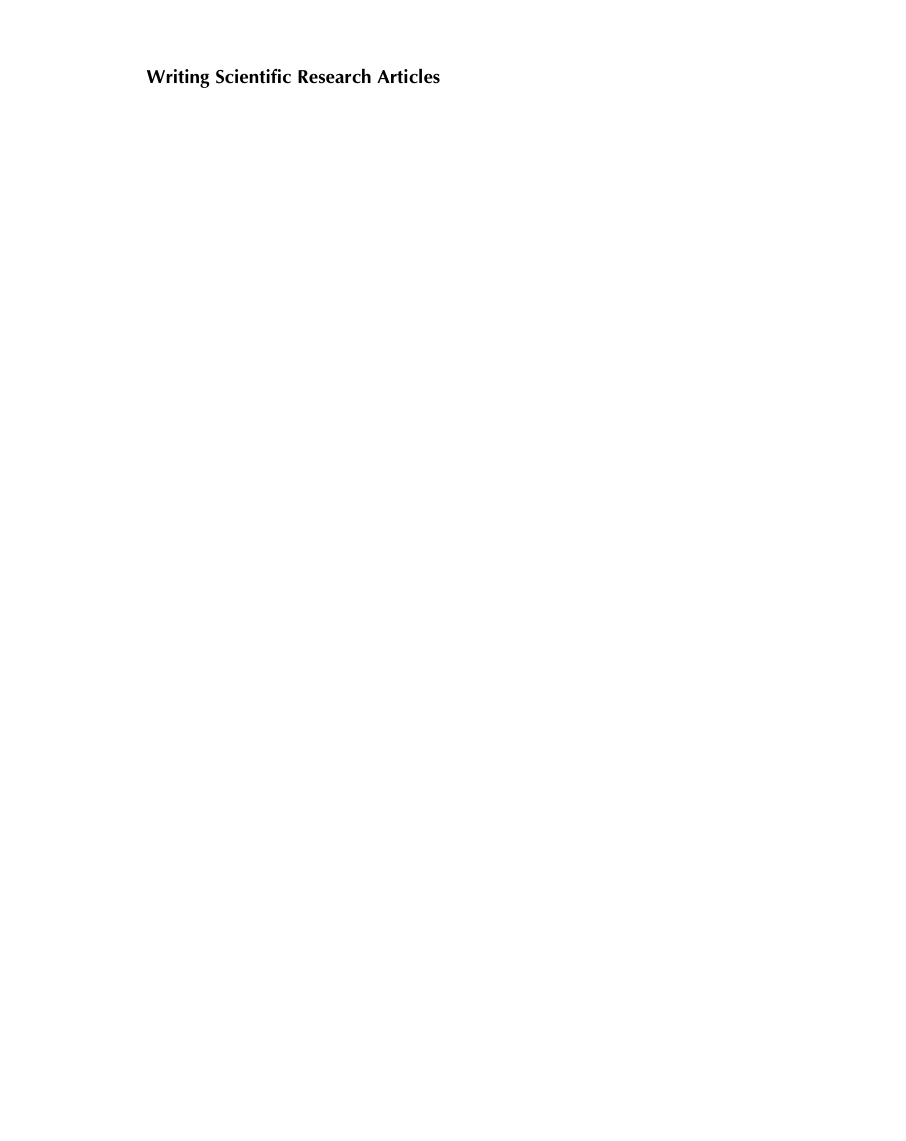

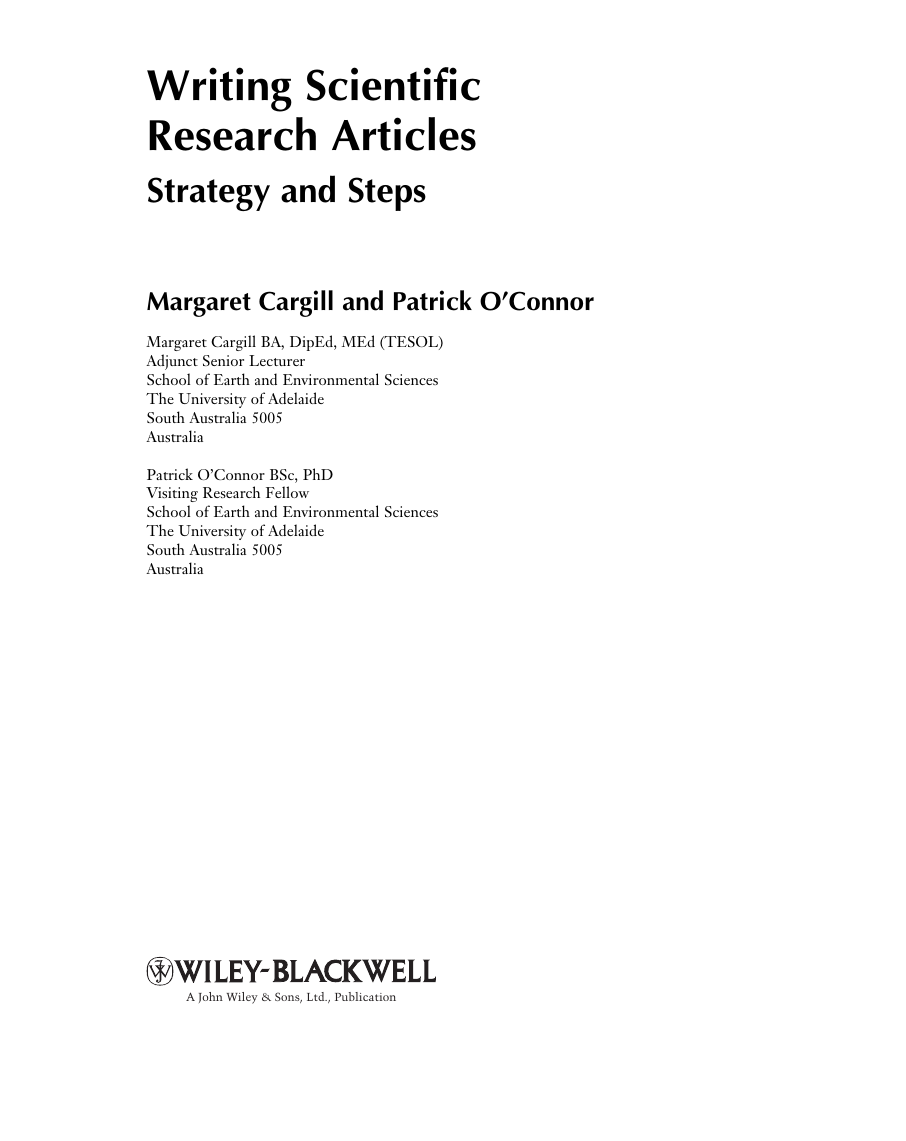
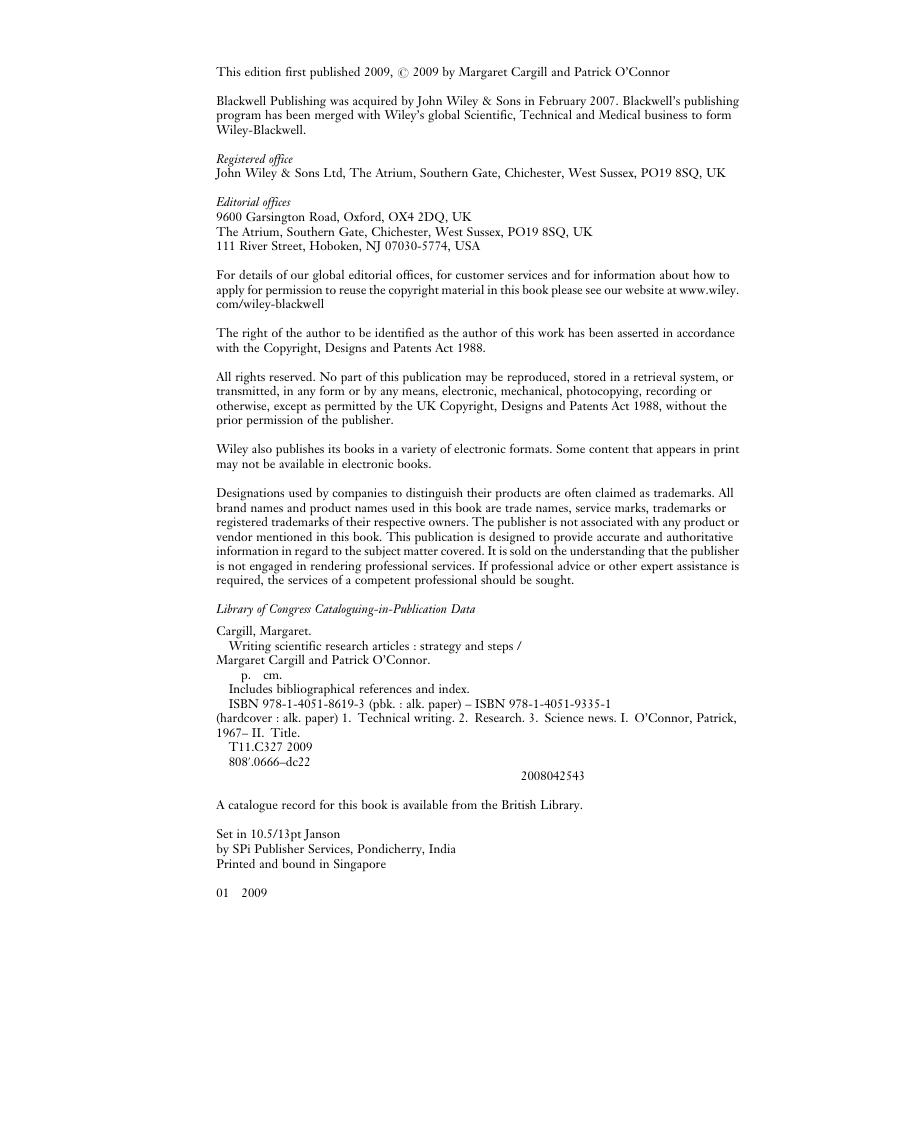
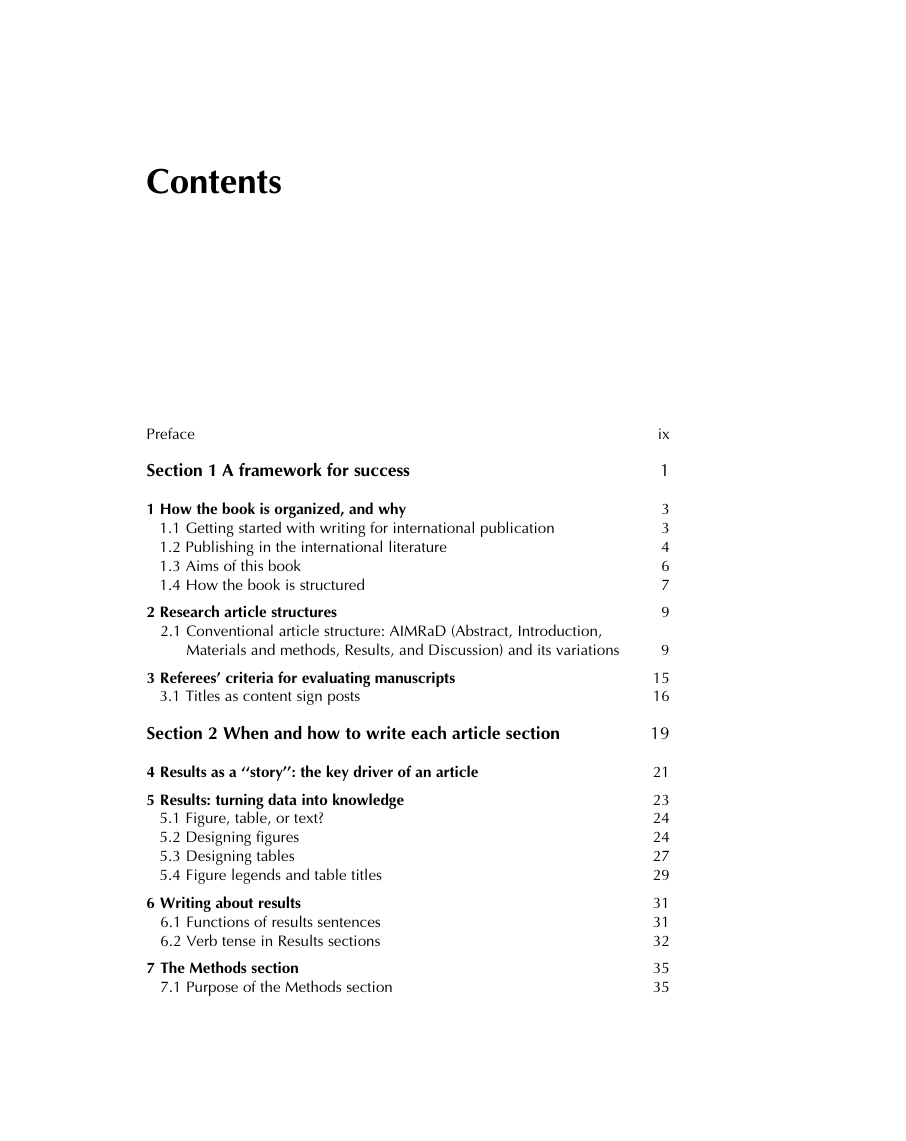
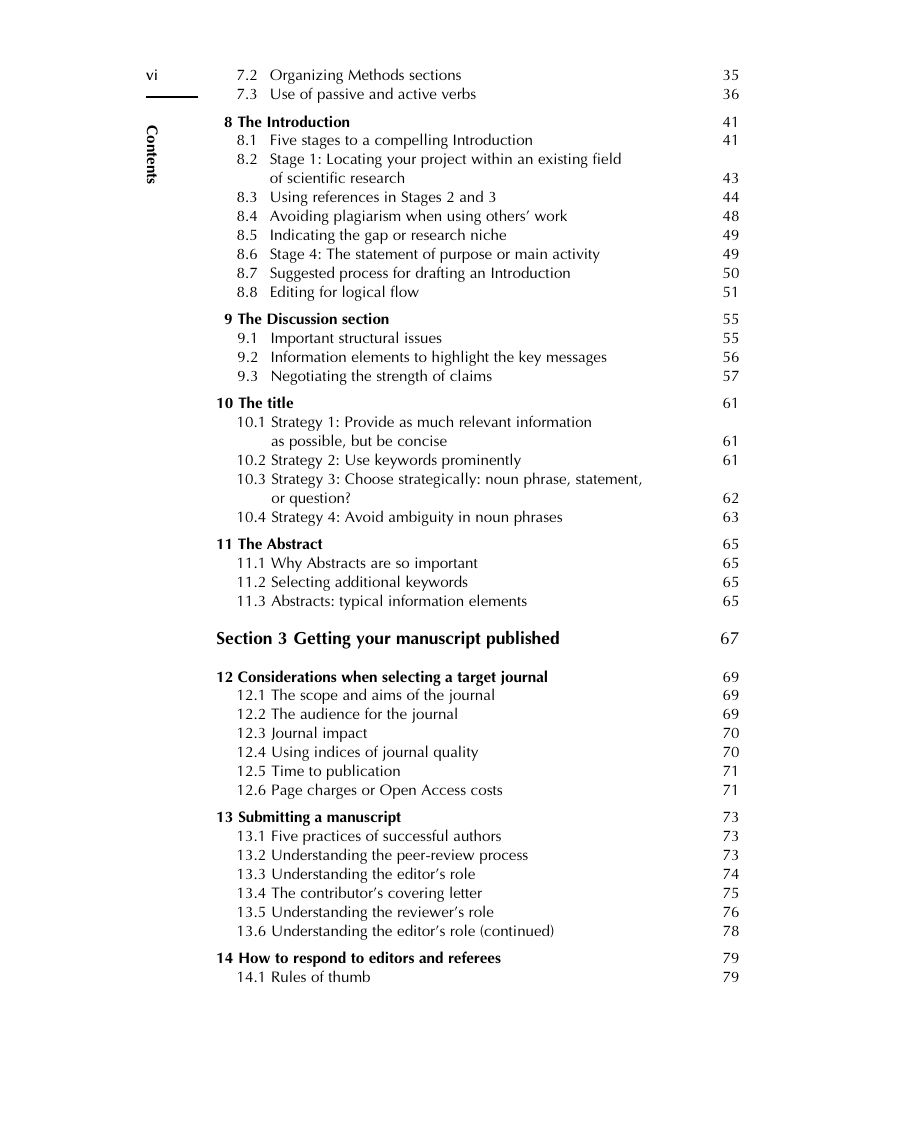
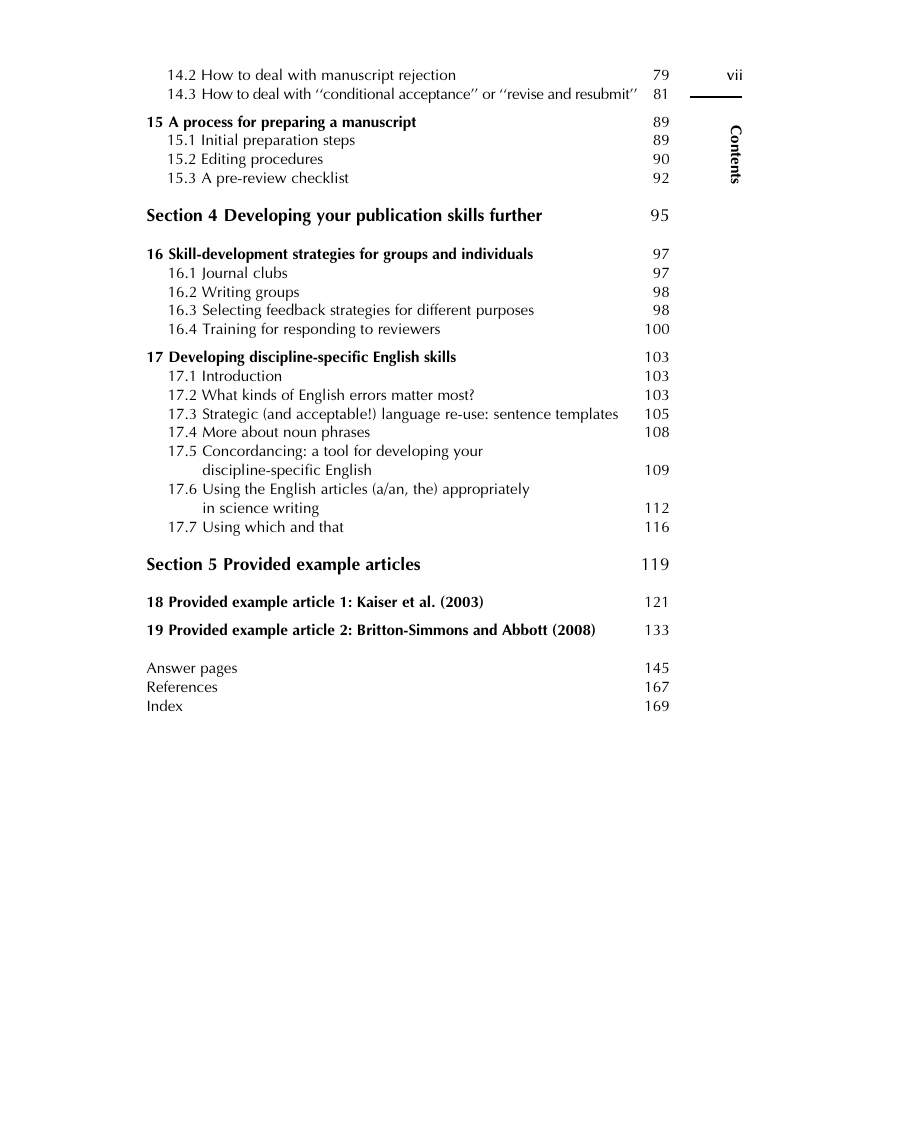








 2023年江西萍乡中考道德与法治真题及答案.doc
2023年江西萍乡中考道德与法治真题及答案.doc 2012年重庆南川中考生物真题及答案.doc
2012年重庆南川中考生物真题及答案.doc 2013年江西师范大学地理学综合及文艺理论基础考研真题.doc
2013年江西师范大学地理学综合及文艺理论基础考研真题.doc 2020年四川甘孜小升初语文真题及答案I卷.doc
2020年四川甘孜小升初语文真题及答案I卷.doc 2020年注册岩土工程师专业基础考试真题及答案.doc
2020年注册岩土工程师专业基础考试真题及答案.doc 2023-2024学年福建省厦门市九年级上学期数学月考试题及答案.doc
2023-2024学年福建省厦门市九年级上学期数学月考试题及答案.doc 2021-2022学年辽宁省沈阳市大东区九年级上学期语文期末试题及答案.doc
2021-2022学年辽宁省沈阳市大东区九年级上学期语文期末试题及答案.doc 2022-2023学年北京东城区初三第一学期物理期末试卷及答案.doc
2022-2023学年北京东城区初三第一学期物理期末试卷及答案.doc 2018上半年江西教师资格初中地理学科知识与教学能力真题及答案.doc
2018上半年江西教师资格初中地理学科知识与教学能力真题及答案.doc 2012年河北国家公务员申论考试真题及答案-省级.doc
2012年河北国家公务员申论考试真题及答案-省级.doc 2020-2021学年江苏省扬州市江都区邵樊片九年级上学期数学第一次质量检测试题及答案.doc
2020-2021学年江苏省扬州市江都区邵樊片九年级上学期数学第一次质量检测试题及答案.doc 2022下半年黑龙江教师资格证中学综合素质真题及答案.doc
2022下半年黑龙江教师资格证中学综合素质真题及答案.doc